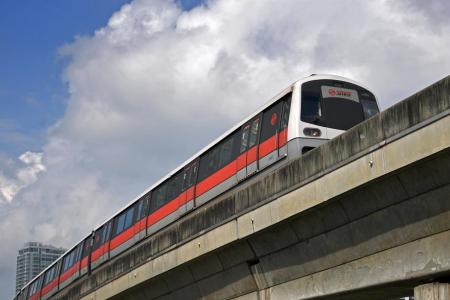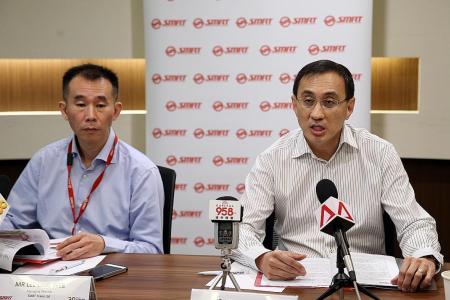North-South and Circle Line improve, East-West unchanged
Report card on rail reliability
In operation since 1987, the East-West MRT Line (EWL) and the North-South MRT Line (NSL) are the oldest in Singapore and in the midst of an overhaul.
Their reliability is uneven.
While the NSL's reliability has risen by 15 per cent, the EWL's remained unchanged for the 12-month period ending March 31 this year.
The reason: rail upgrading works of the NSL have generally been carried out ahead of EWL's.
Operator SMRT, however, is "confident" that the EWL will improve in reliability as its upgrading works catch up with NSL's, its chief executive Desmond Kuek said yesterday, at a briefing on the company's rail operations.
"Our data show that parts of our network that have been renewed and upgraded are performing well. This gives us confidence... we will see stepped improvements in reliability," Mr Kuek added.
He also said that in the next few weeks, SMRT will intensify the trials of a new signalling system for the NSL, by putting in more trains during tests.
The EWL is being equipped with the same signalling system too, but it has yet to be fully installed for the trials to be conducted.
The reliability of trains is measured by what is known as Mean Kilometre Between Failure (MKBF). It refers to the average distance travelled by trains before facing a delay of more than five minutes.
For NSL, the annual MKBF is 180,000km as at 31 March, an improvement over the 156,000km as at 31 Dec last year.
The EWL, however, registered an unchanged MKBF of 145,000km.
But for the eight-year-old Circle Line, the latest MKBF is 282,000km, a 24 per cent improvement over the previous 228,000km.
The reason the trials of the NSL's new signalling system is being intensified is to simulate the train frequency on a typical week day.
They will arrive up to two minutes apart instead of up to three minutes as on a typical Sunday, which is when the trials are done.
The tests, which started on April 16, are expected to last two months.
The replacement of the power-supplying third-rail for the NSL and EWL will also be finished in "the next one month or so", said the managing director of SMRT Trains, Mr Lee Ling Wee.
Last year, third-rail problems caused 18 delays that lasted more than five minutes.
Mr Lee said trains have since been installed with devices to monitor the alignment of the third-rail, so such situations are now resolved in 10 minutes.
Singapore Institute of Technology Assistant Professor Zhou Yi said the EWL's reliability will improve, especially when its new signalling system is ready next year.
The new system does not rely much on track circuits and also has a back-up in the event of a failure, he added.
SMRT has also increased the staff strength in its train department. It now has 5,200 employees, an annual rise of 6 per cent. It also has more than 400 engineers, almost double that of three years ago.
Get The New Paper on your phone with the free TNP app. Download from the Apple App Store or Google Play Store now



